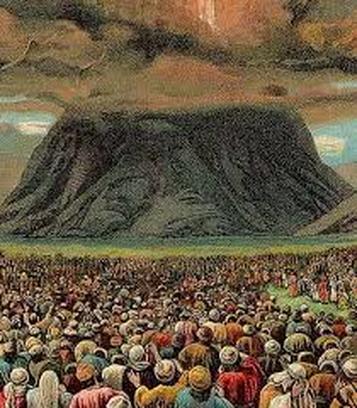 Rabbi David Etengoff Dedicated to the sacred memories of my mother, Miriam Tovah bat Aharon Hakohen, father-in-law, Levi ben Yitzhak, sister-in-law, Ruchama Rivka Sondra bat Yechiel, sister, Shulamit bat Menachem, Chaim Mordechai Hakohen ben Natan Yitzchak, Yehonatan Binyamin ben Mordechai Meir Halevi, Avraham Yechezkel ben Yaakov Halevy, Shayna Yehudit bat Avraham Manes and Rivka, and HaRav Raphael ben HaRav Ephraim, the refuah shlaimah of Devorah bat Chana, Yitzhak Akiva ben Malka, Yekutiel Yehudah ben Pessel Lifsha, Yakir Ephraim ben Rachel Devorah, Tzvi Yoel ben Yocheved and Shoshana Elka bat Etel Dina, and the safety of our brothers and sisters in Israel and around the world. The Shalosh Regalim (the Three Festivals) are the crown jewels of the Jewish year. Pesach commemorates the Exodus, Shavuot celebrates the giving of the Torah, and Sukkot is the festival that memorializes Hashem’s unlimited chesed (kindness) to our people who dwelt in sukkot following the Exodus. There is a singular difference that obtains, however, between Pesach and Sukkot, and Shavuot: The Torah associates the first two with specific calendrical dates, whereas Shavuot has none: In the first month [Nissan], on the fourteenth of the month, in the afternoon, [you shall sacrifice] the Passover offering to the L-rd. And on the fifteenth day of that month is the Festival of Unleavened Cakes to the L-rd; you shall eat unleavened cakes for a seven-day period (Sefer Vayikra 23:5-6) Speak to the children of Israel, saying: On the fifteenth day of this seventh month [Tishrei], is the Festival of Sukkot, a seven-day period to the L-rd. (Sefer Vayikra: 23:34) You shall count seven weeks for yourself; from [the time] the sickle is first put to the standing crop, you shall begin to count seven weeks. And you shall perform chag Shavuot (the Festival of Weeks) to the L-rd, your G-d, the donation you can afford to give, according to how the L-rd, your G-d, shall bless you. (Sefer Devarim 16:9-10, these and all Bible translations, The Judaica Press Complete Tanach) How can we understand this fundamental difference between Shavuot and the other chagim (festivals)? I believe we can find our answer by borrowing a concept from the discipline of Physics. Since the time of Albert Einstein (1879-1955), modern Physics has maintained that there are four dimensions: length, depth, height and time. Pesach and Sukkot are squarely anchored in each of these dimensions, since they deal with different aspects of our people’s physical salvation (hatzalat gufani) in the face of what appeared to be impossible odds. Moreover, the redemption that unfolded during these days was brought about through objects of nature, such as blood, frogs, lice and wild animals etc. (the Ten Plagues), and the sukkot themselves. The chagim of Pesach and Sukkot, therefore, were given their calendrical dates, i.e. clearly designated times, to indicate that the entire process of redemption took place within the physical universe, and within Physics’ four dimensions. Shavuot, however is inherently dissimilar to Pesach and Sukkot in one fundamental sense, namely, it represents spiritual salvation (hatzalat ruchani); for on this day our forebears encountered the Almighty on a lonely mountain in the wasteland of the Sinai Desert, accepted His holy Torah and forged an eternal relationship. As this was a purely miraculous spiritual event, it was outside of Physics’ four dimensions – including time itself. The Torah, therefore, did not assign Shavuot a fixed date, precisely to indicate that it was beyond time, and consequently, unique. When we celebrate the festival of Shavuot, therefore, we are confirming our spiritual connection to Hakadosh Baruch Hu (the Holy One blessed be He), His holy Torah, and the future of the Jewish people. May this Shavuot be a joyous chag wherein we strengthen our connection to Hashem, and re-experience the spiritual heights of Mattan Torah (the Giving of the Torah) once again. V’chane yihi ratzon. Shabbat Shalom and Chag Sameach! Past drashot may be found at my blog-website: http://reparashathashavuah.org They may also be found on http://www.yutorah.org/ using the search criteria of Etengoff and the parasha’s name. The email list, b’chasdei Hashem, has expanded to hundreds of people. I am always happy to add more members to the list. If you have family or friends you would like to have added, please do not hesitate to contact me via email mailto:[email protected]. *** My audio shiurim for Women on the topics of Tefilah and Tanach may be found at: http://tinyurl.com/8hsdpyd *** I have posted 164 of Rabbi Soloveitchik’s English language audio shiurim (MP3 format) spanning the years 1958-1984. Please click on the highlighted link.
0 Comments
Leave a Reply. |
Details
Archives
July 2024
AuthorTalmid of Rabbi Soloveitchik zatzal Categories |
- Blog: Rabbi David Etengoff: Parashat HaShavuah
- Sefer Bereishit 5784&5785
- Sefer Shemot 5784&5785
- Sefer Vayikra 5784&5785
- Sefer Bamidbar 5784 &5785
- Sefer Bereishit 5782&5783
- Sefer Shemot 5782&5783
- Sefer Vayikra 5782&5783
- Sefer Bamidbar 5782&5783
- Sefer Devarim 5782&5783
- Sefer Bereishit 5780& 5781
- Sefer Shemot 5780&5781
- Sefer Vayikra 5780&5781
- Sefer Bamidbar 578&5781
- Sefer Devarim 578&5781
- Sefer Bereishit 5778&5779
- Sefer Shemot 5778&5779
- Sefer Vayikra 5778&5779
- Sefer Bamidbar 5778&5779
- Sefer Devarim 5778&5779
- Sefer Bereishit 5776&5777
- Sefer Bereishit 5774&5775
- Sefer Bereishit 5772&5773
- Sefer Bereishit 5771&5770
- Sefer Shemot 5776&5777
- Sefer Shemot 5774&5775
- Sefer Shemot 5772&5773
- Sefer Shemot 5771&5770
- Sefer Vayikra 5776&5777
- Sefer Vayikra 5774&5775
- Sefer Vayikra 5772&5773
- Sefer Vayikra 5771&5770
- Sefer Bamidbar 5776&5777
- Sefer Bamidbar 5774&5775
- Sefer Bamidbar 5772&5773
- Sefer Bamidbar 5771&5770
- Sefer Devarim 5776&5777
- Sefer Devarim 5774&5775
- Sefer Devarim 5772&5773
- Sefer Devarim 5771&5770
 RSS Feed
RSS Feed
